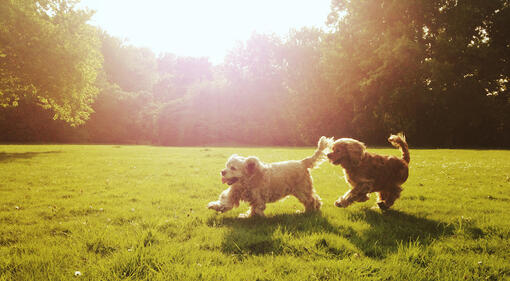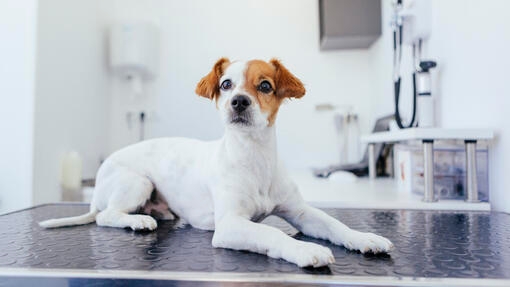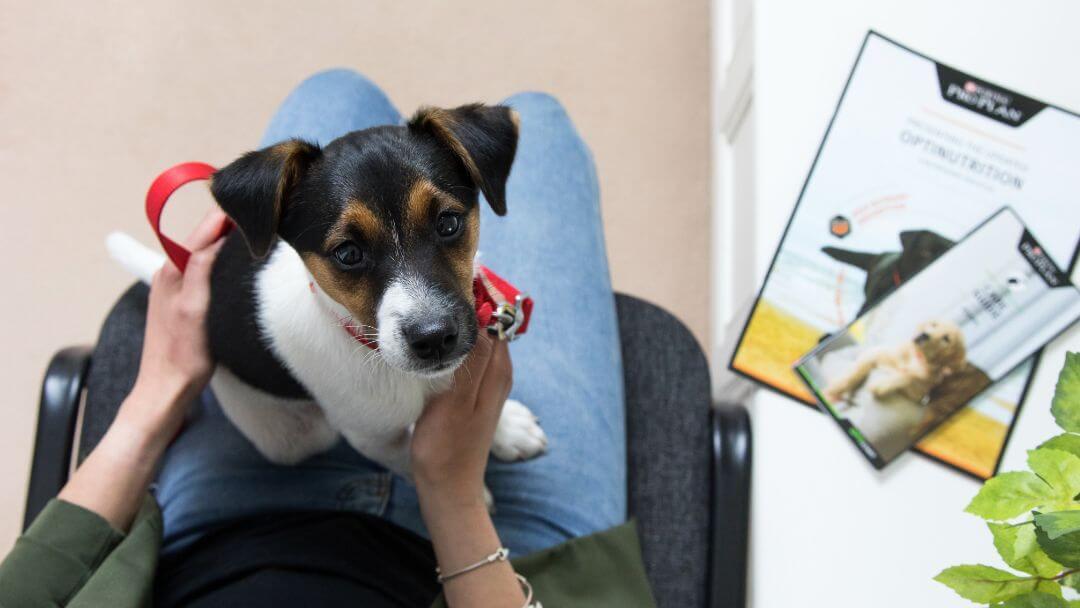
Castration or neutering is one of the most frequent procedures carried out by veterinarians in the western world. Used as a way to sterilise male dogs to prevent them from reproducing, castration is something most dog owners may consider at some point in their dog’s life. But what is surgical and chemical castration in dogs, and which procedure should you choose if you decide to neuter your dog? Read on to learn more about these two very different but equally efficient techniques.
Why castrate a male dog?
The neutering of male dogs is a common procedure carried out by a veterinarian. Together with the owner, and often with the input and advice of a behaviourist, they will decide if neutering is the right option for your dog, and if a chemical or surgical operation should be performed.
Here are some of the reasons you might consider castrating your dog.
- Pet population control
If you live in a country where there are a lot of free-roaming dogs – or if you have a multi-dog household where you have un- neutered females, your reason for castration may be population control and to prevent unwanted pregnancies. Pet overpopulation is now a global issue resulting in millions of dogs not having a loving home where they are taken care of.
- Medical reasons
We all want a healthy pet and there are some diseases and issues that can definitely be prevented by surgical castration (including testicular cancer).
This isn’t a straightforward issue however and research is always giving us more insight into the health benefits – and drawbacks – of castration. It can also depend on your dog’s breed/type, so this is a discussion to have with your vet.
- To stop or prevent behavioural issues
It used to be thought that neutering would be the cure to lots of behaviour problems in male dogs and in the past, it was recommended as a matter of course to prevent these issues from arising. As research progresses however, we have found out that it isn’t that straightforward!
Testosterone, the male sex hormone, can indeed be the cause of various challenges in male dogs – especially in adolescence when hormone levels are unnaturally high at a time when good decision-making and social competencies are still juvenile. Without understanding and sensitive handling at this time, it can cause them to become reactive, competitive towards other males, selectively obedient (!) – and also show (or increase) what we think of as antisocial behaviours such as urine marking, humping and chasing bitches in heat. This can be a challenge for many owners who do not want to live with these behaviours.
Castration of male dogs will prevent behaviours that are driven by testosterone – in other words, that have a sexual drive behind them – and it may stop or reduce the behaviours that haven’t become habit. This can result in a dog that is easier to live with, is calmer, and is more social around other dogs.
However, as a lot of reactive behaviour (plus fears and phobias) stem from a lack of confidence, removing the hormone that gives a dog confidence can worsen some behaviour problems.
If your reason for considering castration is purely behavioural, discuss this with a behaviourist before taking the plunge to make sure you will be improving your dog’s behaviour and not worsening it – and look at chemical castration as your first option, as this is reversible.
As mentioned before, there are two ways you can go about castration: you can either opt for a chemical or a surgical method. But first, let’s find out what each of them entails so that you can choose the best option for your furry friend.
What is chemical castration in dogs?
Chemical castration is a temporary castration choice that lasts 6-12 months, meaning that unlike surgical castration, it’s completely reversible. The treatment comes in the form of an implant that’s introduced under your dog’s skin, and unlike surgical procedures, it doesn’t require anaesthesia.
Talk to your vet about the best age to do this procedure as it differs between dogs (based largely on their size and your reasons for castration).
After the procedure, the implant will slowly release a synthetic hormone that suppresses the dog’s fertility. There’s no need to have the implant removed because the hormone will eventually wear off. You can if necessary, remove it if your pet has any adverse reactions to the implant.
Pros of chemical castration
- Reversible
- Lower cost
- Doesn’t require anaesthesia
- Very fast recovery from the procedure
- Prevents unwanted breeding
- Will give a good indication of how a dog’s behaviour may be changed as a result of surgical castration
- Can help owners get past the ‘hormone-high’ of adolescence and train appropriate behaviours
- Can be used in dogs who might be bred from in the future
- It doesn’t need removal
Cons of chemical castration
- Can result in possible side effects
- Doesn’t have an immediate effect
- May have a slight sedative effect and so behaviour changes might not be 100% accurate
- Needs to be monitored and repeated every 6-12 months (especially if it is being used for population control)
Possible side effects
As with most procedures, chemical castration in dogs can have some possible side effects. This is not to say that your dog will experience any or all of them but rather, it depends on each dog and how their bodies react to the implant. To be prepared, check out some of the possible adverse reactions described below.
- Some swelling or redness at the injection spot, but this should go away in a few hours and your dog shouldn’t experience a lot of discomfort.
- Permanent infertility. Although cases are rare, there is a small possibility that your dog’s fertility could be permanently affected.
- Changes in energy levels and weight gain. After the procedure, dogs usually tend to have decreased energy levels or are more sedentary which might result in them putting on a few extra kilograms. It’s important that you monitor your dog’s activity and make sure they’re getting enough exercise.
- Coat changes. There’s a tendency for dogs to develop fluffier coats after castration.
What is surgical castration in dogs?
Unlike chemical castration, the surgical castration procedure is irreversible. This technique is also known as neutering and entails the removal of both testicles, therefore completely and permanently eliminating your dog’s ability to reproduce. Although it’s a routine procedure, it still requires general anaesthesia and can only be performed once your pet’s testicles drop down from inside their abdomen into their scrotum.
After removal of the testicles, the vet will close up the area with sutures and check the dog to see if further pain medication or any other type of care is needed. Most dogs will feel drowsy after the procedure because of the anaesthesia so they will require a few hours of sleep and rest until they’re fully awake and able to walk but can still be feeling the effects for some time afterwards.
Once they’re back home, your dog will need constant monitoring to prevent them chewing at the stitches, and so that they don’t overexert themselves. If everything goes well, they’ll have their stitches removed after a few days and they should be back to normal in a couple of weeks.
Pros of surgical castration
- Permanent and so no need for repeated treatment or monitoring
- Prevents some health issues
- Effective in reducing sexually driven behaviours
- Prevents unwanted breeding and highly effective for population control
- May make dogs calmer and easier to manage
Cons of surgical castration
- It can result in complications during or after surgery
- Slow recovery
- Requires anaesthesia and after care
- Higher cost including post-surgical medication
- Can cause changes in physical development and coat texture
- May exacerbates fear or anxiety-driven behaviour problems
Possible side effects
If your dog is in good health, the chances of them experiencing any serious complications are low. However, it’s best to be aware that, although rare, some complications might still occur. A few possible ones to look out for are listed below.
- Infections. Post-surgical care is key to making sure your dog doesn’t experience any complications. An old-fashioned Elizabethan cone, or an inflatable collar will prevent your dog from licking their wounds or scratching at irritated spots.
- Anaesthetic risks. Dogs can experience vomiting or even cardiac arrest after they wake up from anaesthesia. Certain dogs are more prone to these problems because of their breed, age, or health. However, your vet will be there when they wake up and will help if needed.
- Weight gain or stomach issues. These problems are the same as those that can result from chemical castration in dogs. Therefore, after the surgery, make sure you monitor your dog and if necessary, adjust their diet and exercise to avoid weight gain. If you notice that they’re beginning to lose weight, you can slowly increase the amount of food you give them.
- Scrotal swelling or bleeding. This is more likely to occur in older dogs or in cases when the dog is overly active after the surgery.
Which option should I choose?
Both these options are great in terms of effectiveness and so, depending on your preferences and your dog’s needs, you can either go with the temporary or the permanent solution. You should consider all the pros and cons and make your decision based on what would be most beneficial to your dog.
If your reasoning for castration is population control, then surgical castration is your best option. If you are looking to improve your dog’s behaviour, chemical castration gives you a chance to see how it will affect your dog before taking the plunge.
Every dog is different – and every owner has different reasons for considering castration. This is a decision that should be taken in consultation with your vet – and if necessary, a behaviourist.
Need more information? Check out the answers to some of the most common questions about neutering and spaying dog owners have.











